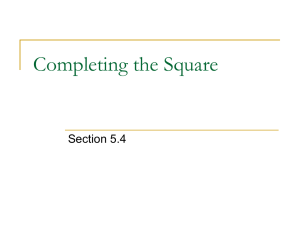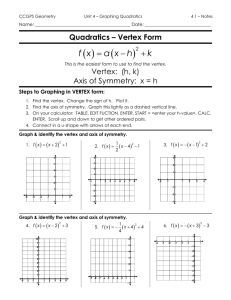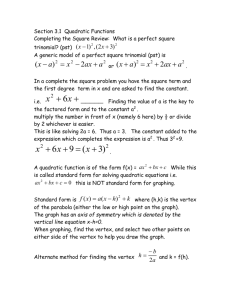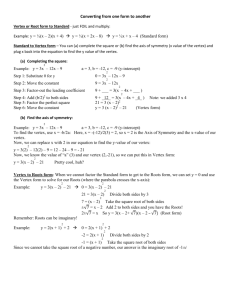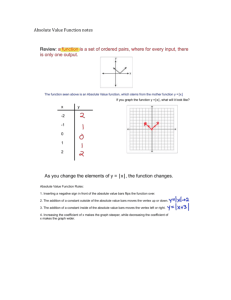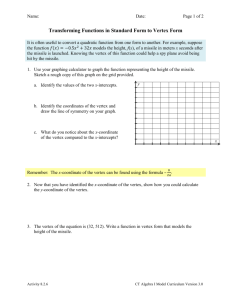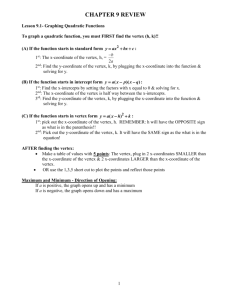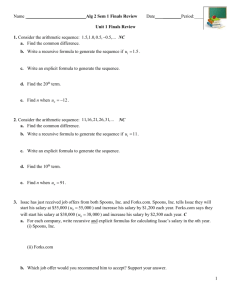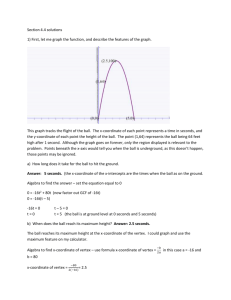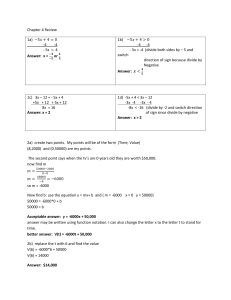Partial Factoring - notes
advertisement
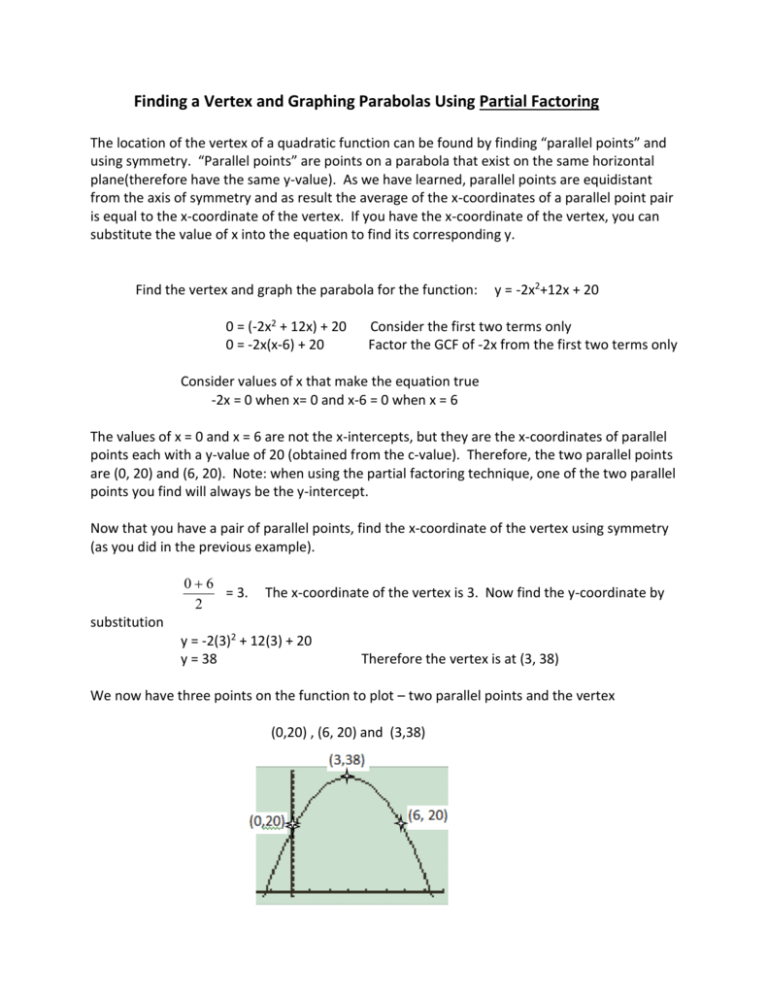
Finding a Vertex and Graphing Parabolas Using Partial Factoring The location of the vertex of a quadratic function can be found by finding “parallel points” and using symmetry. “Parallel points” are points on a parabola that exist on the same horizontal plane(therefore have the same y-value). As we have learned, parallel points are equidistant from the axis of symmetry and as result the average of the x-coordinates of a parallel point pair is equal to the x-coordinate of the vertex. If you have the x-coordinate of the vertex, you can substitute the value of x into the equation to find its corresponding y. Find the vertex and graph the parabola for the function: 0 = (-2x2 + 12x) + 20 0 = -2x(x-6) + 20 y = -2x2+12x + 20 Consider the first two terms only Factor the GCF of -2x from the first two terms only Consider values of x that make the equation true -2x = 0 when x= 0 and x-6 = 0 when x = 6 The values of x = 0 and x = 6 are not the x-intercepts, but they are the x-coordinates of parallel points each with a y-value of 20 (obtained from the c-value). Therefore, the two parallel points are (0, 20) and (6, 20). Note: when using the partial factoring technique, one of the two parallel points you find will always be the y-intercept. Now that you have a pair of parallel points, find the x-coordinate of the vertex using symmetry (as you did in the previous example). 06 = 3. 2 The x-coordinate of the vertex is 3. Now find the y-coordinate by substitution y = -2(3)2 + 12(3) + 20 y = 38 Therefore the vertex is at (3, 38) We now have three points on the function to plot – two parallel points and the vertex (0,20) , (6, 20) and (3,38)


